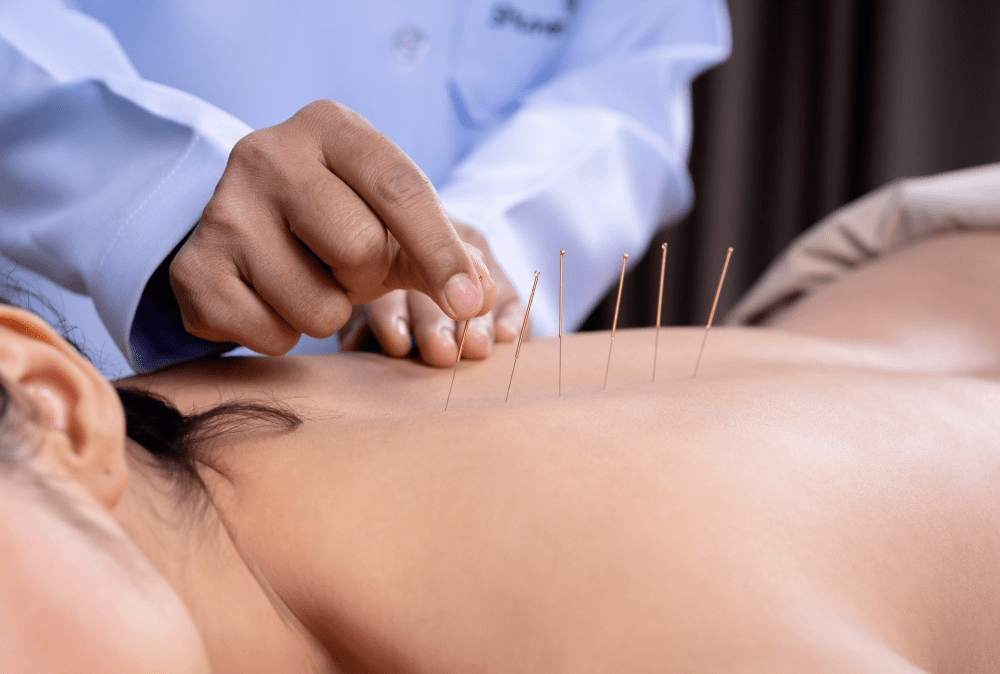Living with osteoarthritis (OA) can feel like a daily battle. The achy joints, stiffness, and limited mobility—whether in your knees, hips, or hands—can make even simple tasks a challenge. If you’ve been managing OA with painkillers or physical therapy but are curious about other ways to feel better, you’re not alone. Increasingly, people are turning to complementary and alternative medicine (CAM) to assist with relieving their symptoms and achieving more autonomy in the management of their health in a more holistic way. What follows is a journey through what CAM is, why you should be looking at it for OA, and some of the most popular choices out there, including what the science says and how to begin.
Related: Dealing with Psoriatic Knee Arthritis and Bone-on-Bone Knee Pain: Your Friendly Guide
What’s CAM All About?
Let’s break it down. Complementary and alternative medicine includes a wide range of therapies that aren’t typically part of standard medical care. Complementary means using these alongside your usual treatments, like medications or physical therapy. Alternative means using them instead of conventional options, though most people blend the two for the best results. For osteoarthritis, CAM covers things like acupuncture, herbal supplements, yoga, massage, and even tweaking your diet to fight inflammation.
Why are people drawn to CAM? It’s all about looking at the big picture—your body, mind, and lifestyle—not just your creaky joints. Plus, many CAM approaches have fewer side effects than long-term pain meds, and they empower you to play an active role in feeling better. That said, not every CAM therapy is a magic bullet, and some need more research to back them up. So, let’s dive into the options and see what might work for you.
Why Try CAM for Osteoarthritis?
Osteoarthritis is a chronic condition with no cure, and standard treatments often focus on managing pain rather than fixing the root issue. That’s where CAM comes in. Here’s why it’s worth a look:
- Whole-Person Care: CAM doesn’t just target your joints—it considers your overall well-being, from stress to sleep to movement.
- Gentler on the Body: Unlike NSAIDs, which can upset your stomach or strain your kidneys over time, many CAM therapies, like yoga or meditation, are low-risk.
- You’re in the Driver’s Seat: CAM encourages you to make choices—like eating better or trying tai chi—that put you in charge of your health.
- Lots of Options: From needles to herbs to gentle stretches, there’s something for everyone, so you can find what fits your vibe.
The catch? Not all CAM therapies are backed by solid science, and some can be pricey or interact with meds. Always check with your doctor before diving in, especially if you’re on other treatments.
Popular CAM Therapies to Ease OA Symptoms
Let’s explore some of the most common CAM approaches for osteoarthritis. I’ll share what they are, what the research says, and things to keep in mind.
1. Acupuncture: Needles for Relief
You’ve probably heard of acupuncture—those tiny needles placed at specific points on your body to balance energy (or “qi” in traditional Chinese medicine). For OA, it’s thought to ease pain by boosting endorphins and improving blood flow to sore joints.
What the Science Says: Research, like studies in Arthritis & Rheumatology, shows acupuncture can help with knee OA pain, often better than a placebo (sham acupuncture). A 2019 analysis found it improved pain and movement, but results vary from person to person. The placebo effect might play a role, but if it helps, does that matter?
Things to Know: Find a licensed acupuncturist to ensure it’s done safely. It might take a few sessions to notice a difference, and insurance doesn’t always cover it, so check your plan.
2. Herbal Supplements: Nature’s Pain Fighters
Supplements like turmeric, glucosamine, and ginger are super popular for OA because they’re thought to reduce inflammation or support joint health. Here’s the lowdown:
- Turmeric (Curcumin): This bright yellow spice is a powerhouse thanks to curcumin, which fights inflammation. A 2020 study in Annals of Internal Medicine found curcumin worked as well as NSAIDs for knee OA pain, with fewer side effects.
- Glucosamine and Chondroitin: These are made from cartilage and are said to help joints stay healthy. But the research is mixed—some studies show a small benefit, while a big NIH trial found they weren’t much better than a placebo.
- Ginger: This spicy root might ease pain thanks to its anti-inflammatory properties, but there’s less research on it compared to turmeric.
Things to Know: Supplements aren’t regulated like drugs, so quality can vary. They can also mess with medications (like blood thinners), so talk to your doctor first.
3. Massage Therapy: Kneading Away the Pain
Who doesn’t love a good massage? For OA, massage can loosen tight muscles, boost circulation, and ease stiffness, making it easier to move.
What the Science Says: A 2018 study in Journal of General Internal Medicine showed that weekly massages reduced knee OA pain and improved function over eight weeks. The catch? You need regular sessions to keep the benefits going.
Things to Know: Go to a therapist who knows how to work with OA to avoid irritating your joints. If your joints are super inflamed, massage might not be the best choice.
Related: Guide to Finding Local Massage Services and Relaxation Therapies
4. Yoga and Tai Chi: Move Better, Feel Better
Gentle movement practices like yoga and tai chi are perfect for OA because they build strength, improve flexibility, and calm your mind—all without jarring your joints.
- Yoga: Think gentle poses like cat-cow or seated stretches. A 2017 study in Journal of Rheumatology found yoga helped women with knee OA feel less pain and move better, plus it boosted their mood.
- Tai Chi: This slow, flowing Chinese martial art is like moving meditation. A 2016 analysis in Complementary Therapies in Medicine showed it reduced pain and improved function in OA patients.
Things to Know: Start with a class led by an instructor who can modify moves for OA. Chairs or props can make these practices doable even if you’re stiff or sore.
5. Eating for Joint Health
What you eat can make a big difference with OA. A healthy diet can fight inflammation and help you maintain a weight that’s kinder to your joints.
- Anti-Inflammatory Foods: Think colorful veggies, fruits, whole grains, and omega-3s (like in salmon or flaxseeds). The Mediterranean diet, full of these foods, has been linked to less OA pain in studies.
- Weight Loss: Even losing a little weight can take pressure off your knees or hips. A 2018 study in Arthritis Care & Research found that dropping 10% of your body weight could cut knee OA pain in half.
Things to Know: Work with a nutritionist to create a plan you can stick with. Crash diets aren’t the answer—slow, steady changes are best.
6. Mind-Body Practices: Calming the Pain
OA isn’t just physical—it can stress you out or drag you down emotionally. Practices like meditation, mindfulness-based stress reduction (MBSR), or biofeedback can help you manage pain and feel more in control.
What the Science Says: A 2019 study in Pain Medicine found MBSR cut pain and boosted quality of life for OA patients. Simple meditation or guided imagery can also help you relax and cope.
Things to Know: These take practice but are super low-risk. Apps or online classes can guide you if you’re new to mindfulness.
What to Watch Out For
CAM sounds great, but it’s not perfect. Here are some things to keep in mind:
- Spotty Regulation: Supplements can be hit-or-miss in quality, so buy from reputable brands.
- Mixed Evidence: Some therapies, like homeopathy, don’t have much science to back them up for OA.
- Interactions: Herbs or supplements can clash with your meds, so always check with your doctor.
- Cost: Things like acupuncture or regular massages can add up, especially if insurance doesn’t cover them.
The key is to talk to your doctor to make sure CAM is safe for you, especially if you’re managing other health conditions.
How to Add CAM to Your OA Routine
Ready to give CAM a try? Here’s how to start:
- Chat with Your Doc: Make sure any new therapy plays nice with your current treatments.
- Take It Slow: Try one or two things at a time to see what helps without overwhelming yourself.
- Find Pros: Look for licensed practitioners, like acupuncturists or yoga instructors trained in OA.
- Track It: Jot down how you feel to figure out what’s working (a pain journal is super helpful).
- Mix and Match: Combine CAM with your usual treatments for the best of both worlds.
What’s Next for CAM and OA?
The good news? Researchers are digging deeper into CAM, studying how things like acupuncture or curcumin work and who they help most. In the future, we might see more personalized CAM plans based on your body and lifestyle. As science catches up, CAM could become a bigger part of standard OA care.
Final Thoughts
Complementary and alternative medicine offers a treasure trove of options for managing osteoarthritis, from soothing acupuncture sessions to anti-inflammatory foods to gentle yoga flows. While not every therapy works for everyone, many are safe, empowering ways to ease pain and boost your quality of life. The trick is to approach CAM thoughtfully—talk to your doctor, start small, and focus on what feels right for you. With a little experimentation, you might find the perfect mix of CAM and conventional care to keep your joints happier and your days brighter.
Got a favorite CAM therapy or curious about one? Let me know, and I can dig deeper for you!


.png)




.jpg)

.jpg)

.png)




